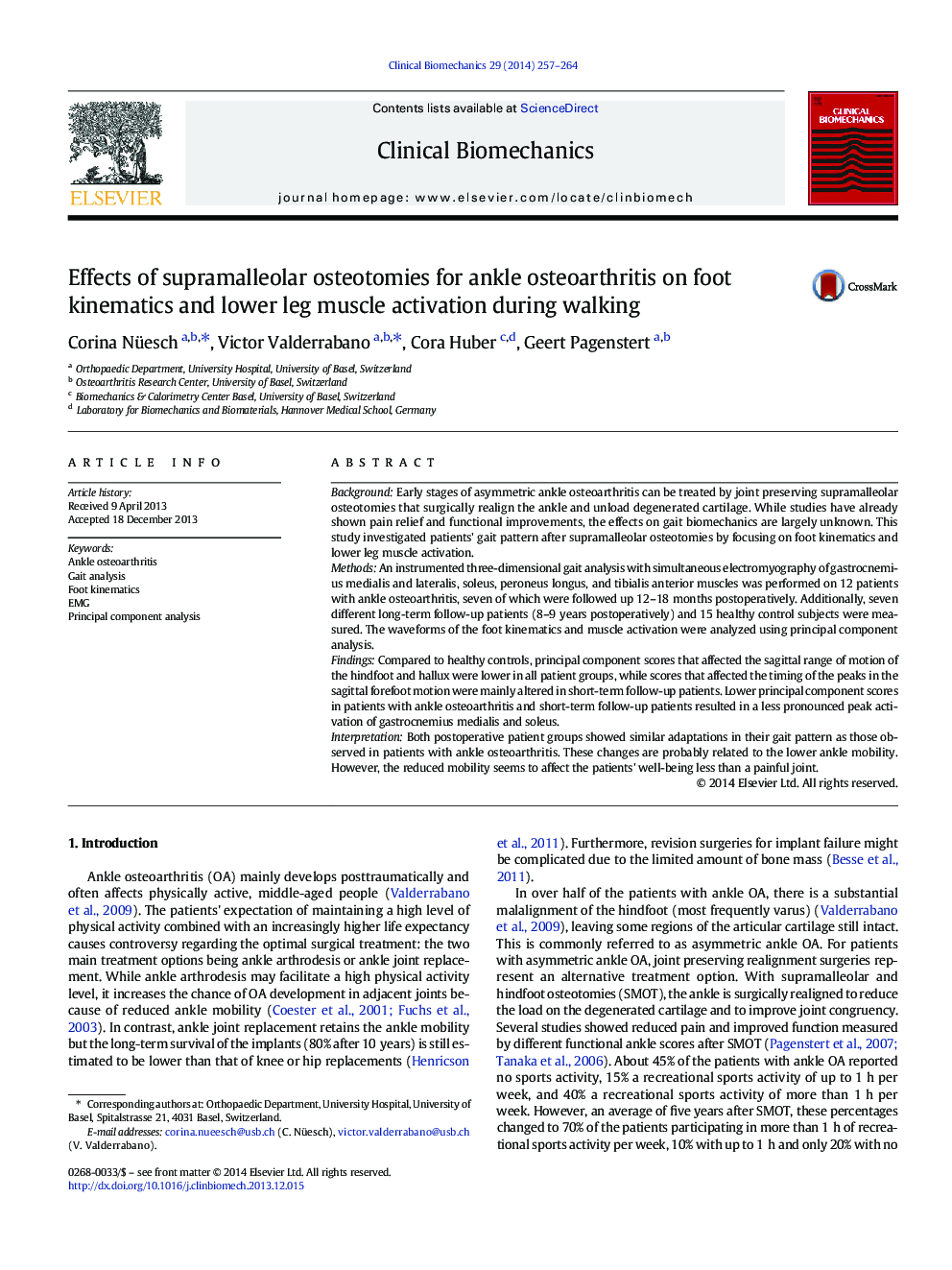| Article ID | Journal | Published Year | Pages | File Type |
|---|---|---|---|---|
| 4050277 | Clinical Biomechanics | 2014 | 8 Pages |
BackgroundEarly stages of asymmetric ankle osteoarthritis can be treated by joint preserving supramalleolar osteotomies that surgically realign the ankle and unload degenerated cartilage. While studies have already shown pain relief and functional improvements, the effects on gait biomechanics are largely unknown. This study investigated patients' gait pattern after supramalleolar osteotomies by focusing on foot kinematics and lower leg muscle activation.MethodsAn instrumented three-dimensional gait analysis with simultaneous electromyography of gastrocnemius medialis and lateralis, soleus, peroneus longus, and tibialis anterior muscles was performed on 12 patients with ankle osteoarthritis, seven of which were followed up 12–18 months postoperatively. Additionally, seven different long-term follow-up patients (8–9 years postoperatively) and 15 healthy control subjects were measured. The waveforms of the foot kinematics and muscle activation were analyzed using principal component analysis.FindingsCompared to healthy controls, principal component scores that affected the sagittal range of motion of the hindfoot and hallux were lower in all patient groups, while scores that affected the timing of the peaks in the sagittal forefoot motion were mainly altered in short-term follow-up patients. Lower principal component scores in patients with ankle osteoarthritis and short-term follow-up patients resulted in a less pronounced peak activation of gastrocnemius medialis and soleus.InterpretationBoth postoperative patient groups showed similar adaptations in their gait pattern as those observed in patients with ankle osteoarthritis. These changes are probably related to the lower ankle mobility. However, the reduced mobility seems to affect the patients' well-being less than a painful joint.
